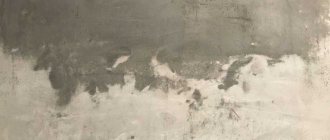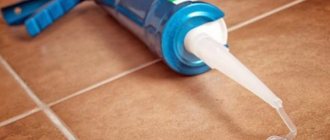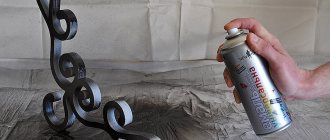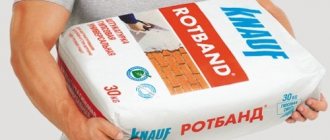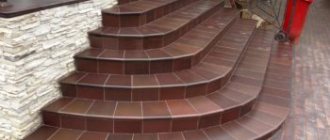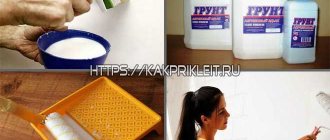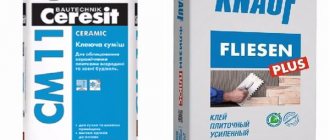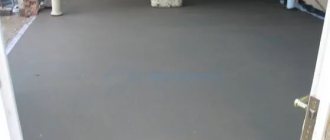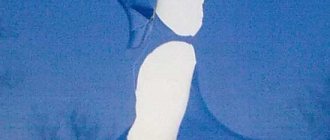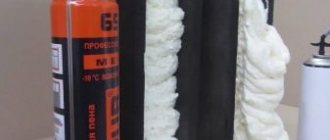PVA glue is a universal composition that has become very popular for use both in office supplies for gluing various objects, and when performing various finishing works to strengthen primers, dilute wallpaper glue and putties.
First you need to understand what PVA glue is. This is a liquid substance of polyvinyl acetate (vinyl acetate polymer) in solution with water, the addition of plasticizers and special components, which forms a familiar adhesive solution for gluing many materials.
To find out how long PVA glue takes to dry, you need to, first, remember that this composition has a large number of varieties that behave completely differently when working.
The time it takes for the substance to dry is influenced by a number of factors, from the type of surface to the air temperature in the room. This process can take from a few minutes to a whole day. To achieve the desired result quickly, you should carefully prepare for the gluing process. Let's look into all the intricacies.
Main characteristics
PVA glue is a special thick mixture that has a characteristic odor reminiscent of a type of alcohol. In essence, it is a dispersion of PVAD, plasticizers and a number of other additives. It is safe to say that this composition is completely harmless to human skin.
Of course, there are brands of glue that contain auxiliary ingredients, and they cannot be called completely safe. In most cases, these are specific solutions that have a specific purpose for special types of activities. As a rule, most manufacturers produce ordinary PVA glue, the so-called “universal” one, which does not contain potentially dangerous components.
Adhesive bonding of wood products, sawdust and textiles
Wood glue connection
One of the common surfaces glued with PVA glue is wood. This material is popular not only in construction, but also in furniture production, carpentry and handicrafts. It is quite in demand, since there is often a need for gluing various parts. Today, glue has a large number of competitors, although most of them are made on the basis of PVA.
When connecting wooden parts together, the main thing is to leave the glued product correctly - this is where it is most important to compress and secure the glued surfaces. Otherwise, the wood will absorb the glue, swell and not stick together. The total drying time is a day. After a week, PVA with wood additives will acquire moisture-resistant properties.
Wood is a fairly soft material, and therefore various damage and cracks appear as a result of work. In this case, any master will recommend the most effective method - mix sawdust with PVA glue and seal the cracks with the resulting mixture. It will securely hold the seam together and no putty will be required. The drying time of the resulting mixture is approximately 2-3 hours.
In needlework, PVA is often used for gluing textile products. On threads and fabrics, glue dries much longer - the fibers absorb even the slightest moisture well. Therefore, the products must be securely pressed together and set aside until completely dry.
This usually takes about six hours. You can speed up the process by placing a cloth on the battery.
With the development of new technologies, the properties of the material are improving. This means that the drying time of PVA glue will decrease over time.
What types of PVA glue are there?
As mentioned above, this mixture can be used to connect almost all surfaces. It is used both by schoolchildren when performing office work, and by builders for gluing wallpaper, joining parts, priming, etc.
Let's take a closer look at each individual type of PVA:
- “Household” - it is used in cases where it is necessary to glue non-woven wallpaper, paper or vinyl based. This adhesive is also used for wooden and concrete bases that have been previously plastered.
- “PVA super (M)” - it can be used not only in the domestic sphere from vapor-permeable materials. With its help you can paste not only wallpaper, but for example linoleum. The yellowish super product does not contain any foreign additives, and its frost resistance lasts about 6 cycles at a temperature of -40 °C.
- “Universal” - it can be used for gluing combined surfaces. It is ideal for gluing linoleum, carpet, serpyanka, cardboard, metal, glass. The product can also be used for gluing laminated paper decorative plastic to chipboard, fiberboard, and MDF materials.
- “Construction” - it includes different types of mixtures that are used in construction. So, for example, if the composition is carpentry, then it is most effectively used for wooden surfaces. There is also parquet glue that is specially designed for it.
- “Stationery” - it is actively used for joining paper, photographic paper, and cardboard. It is most often purchased by schoolchildren, for example, if they need to glue puzzles into a picture. The downside of this substance is its low resistance to low temperatures and moisture.
- “Extra E” - used to work with materials made from vapor-permeable raw materials that do not require special technology for operation and future operation. For example, with plywood, fiberboard, cardboard, wood, paper, and also added to plaster, putty mixtures, etc.
- “PVA dispersion” - used as an additional ingredient in construction mixtures, which are used in many industries, in the shoe industry, for the repair of furniture, in water-dispersed paints, printing, for gluing paper and in the production of cardboard packaging, as well as carpentry work .
If the solution has expired, this is not a problem. Just shake the jar a few times and you can start using it, but there will be a loss in quality.
Bonding paper and cardboard
Brush with glue
Many people have used PVA and know that when gluing, the paper becomes saturated and becomes wavy. This often causes a problem, especially when the issue concerns appliqués. Time and quality in this case depend on the layer of glue applied and its thickness. The thick composition, applied in a thin layer, does not cause deformation of the sheet and dries in about 10-15 minutes. Liquid - from half an hour to an hour and deforms the paper.
When gluing different cardboard, the result depends not only on the condition of the glue, but also on the type of surface being glued. Corrugated cardboard quickly absorbs moisture, and the result is the same effect as with paper. But this does not happen with cardboard, which is much denser than paper. With a smooth, glossy surface, the applied glue dries much longer, only part of it is absorbed into the cardboard. Consequently, complete drying time ranges from 15 minutes to an hour.
What affects the drying time of PVA glue?
The drying time of the product is influenced by many factors. Regardless of the fact that the manufacturer indicates on the container with the composition the approximate drying time of PVA glue. All these indicators are relative.
Also on the packaging you can find detailed information under what conditions the final hardening of the glue takes place. For example, this can happen at a temperature of 20-24 ° C, with air humidity not exceeding 60%. Accordingly, it is rarely possible to achieve similar ratios at home. Therefore, the specified 24 hours will not be enough to completely dry the product.
Factors influencing drying:
- Temperature. If the room is warm, the glue will begin to harden faster. At low temperatures, on the contrary, the drying time will increase. In this case, the adhesive properties and adhesion quality will deteriorate.
- Area of surfaces required for gluing. The larger it is, the longer the drying process will take.
- Mechanical impact. If you exert increased pressure and press the bases tightly together, the hardening time will be shortened.
- Cleanliness of the base. If the base of the objects being glued is cleared of grease, dirt and dust, the product will dry much faster.
- Thickness of the applied layer. If it is thin, the mixture will dry much faster. However, some surfaces, such as porous wood, will require a thicker layer of glue, as the product will be absorbed into them abundantly.
- Texture. If the surface of the base is flat and smooth, it will take a long time to dry. The porous surface absorbs moisture well, which will result in the PVA glue drying faster.
- The product contains 95% polyvinyl acetate, and the remaining 5% are special additives that help improve the quality of the product. Depending on the type of glue chosen, this ratio may vary, which also affects the drying time.
- Type of mixture. If the glue composition is marked “Super” and “Moment”, then it will dry in a matter of seconds. One of the disadvantages of the product is that there simply will not be time to correct the position of the parts being glued together.
Product quality. The original PVA solution will dry as quickly as possible than the craft. Therefore, purchase this mixture only exclusively in specialized construction stores.
The influence of external factors on drying speed
The speed of adhesion of surfaces does not always depend on the brand and grade. Along with them, other factors also influence speed:
- thickness of the applied layer;
- type of texture of connected surfaces;
- how clean the bases are;
- application of mechanical forces - when pressing, the speed increases;
- the area of the surfaces to be joined - the smaller it is, the sooner they will stick together.
Room temperature also matters. Even frost-resistant varieties freeze faster in a warm room.
The main sign of the end of the hardening period is the visible result of polymerization. The glue becomes hard and glass-like. A completely hardened layer is not subject to dissolution by water and other liquids, except for special solvents.
Recommendations for applying glue
Working with PVA is not difficult at all. The instructions clearly indicate that you can glue a certain type of composition and how to use it correctly. But, as with any other work, the surface must be prepared and carefully processed. It must be clean and dry, so it is cleaned of dirt and dust.
For example, if you plan to apply the product to smooth, even walls, then they are treated with fine-grained sandpaper, this will improve the quality of adhesion. And if you will be gluing wallpaper on a rough base, then it should be thoroughly primed in advance. You can find out how long it takes for the primer to dry from our review.
It is important, regardless of the type of paste, to follow simple recommendations:
- The product is applied to the coating that will gradually (slowly) absorb it, that is, less loose.
- To treat thin wallpaper, applying one layer of solution is enough, and for thick coatings you will need two.
- If the composition needs to be applied pointwise, use a specially designed nozzle. If it is not available, you can use improvised items, such as a syringe without an attachment needle or a regular pipette.
- If the coating has a large area, then for application you can use a good lint-free roller, a brush, or, in extreme cases, a sponge. You need to coat it starting from the middle and slowly moving towards the edges.
- To remove air bubbles, you need to place a clean sheet of paper on the coating and carefully smooth out the resulting irregularities through it with a rubber roller or just your palm.
- If possible, it is advisable to place the glued products under a press to ensure greater reliability.
Important! For gluing paper products, it is recommended to purchase the so-called “archival” PVA composition. It does not contain acids, and the paper will not show yellowness after a couple of years.
Mode of application
Gluing PVA to the surface is quite easy. Before gluing wallpaper with this type of glue, you must prepare the surface. It is necessary to remove any dirt and foreign substances such as varnish or paint from the walls. If wallpaper is applied to an uneven surface, it should first be primed, but if the base is too smooth, then the walls must be sanded. It is important to have a dry surface so that the humidity does not exceed 4%.
The next stage means preparing the composition itself. When preparing it, you need to rely on the instructions on the package, which indicate the required ratio and required proportions. However, this does not apply to applying glue to fiberboard, since PVA can be used on such a surface without a thinner.
To hang wallpaper, the glue is applied in an even layer to a sheet of paper, after which the coating should be immediately glued to the surface. To avoid unevenness or the formation of bubbles, the base must be leveled with a dry cloth. Glue is especially useful for joining joints and seams.
As for other materials, it is believed that PVA glue is the most successful option for a wooden surface. It holds parts together perfectly and works very delicately with a natural base. In this case, PVA must be applied twice, since wood absorbs any substance very strongly. Therefore, the first time the glue is applied as a primer, and the second time it already plays the role of a binding component.
Drying time for PVA glue
Drying process on paper
Surely everyone has wondered how to glue paper to paper? So this mixture is used extremely often by those who planned to glue paper products. The mixture dries in approximately 10-15 minutes, sometimes within half an hour. Apply glue to the paper surface in a small and even amount. Otherwise, it will make the paper wavy and slow drying.
How long does it take for PVA glue to dry on wood?
When gluing a wooden surface, PVA glue dries within 24 hours. However, the mixture will acquire its properties 7 days after application. It will become as monolithic as possible and resistant to moisture.
Be sure to press down on the bases to be glued, otherwise the wood will simply absorb all the moisture, begin to swell, and the result of gluing will be negative. If you need to seal a small crack, the mixture should be mixed with sawdust. In this case, the drying time will be from two to three hours.
Drying on fabric
It is not uncommon to hear the question of what is better and how to glue fabric to fabric? We can immediately say that with such work the mixture takes a long time to dry, about 6 hours. This is due to the fact that the fabric absorbs moisture. When gluing, the bases should be pressed against each other for several hours.
Working with plastic
Plastic things are fragile, so they often break. The plastic parts do not stick together well. Poor adhesion is explained by the structure of the material. There are few large pores on the surface of the plastic, which significantly reduces its adhesion. In industrial conditions, parts of plastic are welded. To solve everyday problems, you can use PVA.
Before gluing, the individual parts must be washed and dried. The adhesive mixture is applied to both surfaces in a thin layer, it must be allowed to dry. Then it is applied again, but only to one of the planes. After application, the parts are connected and compressed until completely dry.
Some masters consider it possible to simplify the process. It is advised to apply the solution to one side and press. In this case, re-application is not necessary. When working with plastic, you can use universal PVA or superglue. They dry quickly, which greatly simplifies the process.
Working with glass
PVA can be used to glue glass. Before the process, you need to clean the glass, apply an adhesive to it, which should dry a little. After drying, the parts are connected and pressed tightly against each other. There should be no air bubbles left between the parts; air will damage the strength of the seam. After hardening, PVA polymerizes and becomes completely transparent. To obtain a durable seam, gluing is carried out at a temperature of at least 150 degrees.
How to significantly speed up the drying process?
PVA glue, according to the manufacturer's instructions, dries naturally in about 24 hours. But sometimes a logical question arises: how to quickly dry a fake made on its basis. To do this, place the item in a warm and dry place. For example, in winter you can place the product near the radiator.
You will also need to use the following simple and tricky methods:
- Press the bases of the objects to be glued tightly together. To do this, you can use books, as well as the leg of a table or chair.
- Use heat. You can influence the mixture using a hairdryer or a heated lamp. The temperature during this process should not exceed 100 °C.
- The composition must be applied evenly over the entire surface area.
- The parts to be glued must be thoroughly cleaned and degreased (white alcohol, acetone, etc. will do). This will help speed up the gluing process.
Today on the market there are many brands from different manufacturers, which contain completely different components, which also significantly affects the drying period. Therefore, before purchasing, it is recommended that you pay attention to the instructions in the instructions that come with the kit inside the package or are located on the back of the bottle.
How it is deciphered and what it is made of
PVA is a product of the chemical industry and is named after the main active ingredient, polyvinyl acetate, which makes up 95% of all glue. Polyvinyl acetate is obtained by polymerization of vinyl acetate monomer using various industrial methods. The substance cannot be dissolved in water (it only swells) and oil solutions. Resistant to low and high (but not higher than 100˚ C) temperatures, but not to their alternation. Inert to air. The main feature is that when used, it increases adhesion between the surfaces of materials.
The rest of the PVA glue is occupied by plasticizers and additives. Depending on what type of adhesive product is made, tricresyl phosphate, EDOS, acetone and other esters are added to it. Plasticizers provide the necessary thickness and also improve adhesion to working surfaces.
Advice One of the key properties of polyvinyl acetate is its lack of odor. Pay attention to this indicator when choosing in the store.
Explanation and technical specifications
PVA glue (interpretation) – polyvinyl acetate (PVA). The three-letter abbreviation comes from this component, since the adhesive mass contains about 95% of it.
In accordance with the state standard, PVA glue technical characteristics should be as follows:
- resistance to moisture, temperature changes;
- drying time on surfaces – on average 24 hours;
- load – 550 N/m;
- absence of a pronounced specific odor;
- color – uniform;
- elastic seam.
Other characteristics are listed below. They are worth considering in more detail, since these are the points that characterize such a composition as PVA. Moisture resistance is indicated by the index D1…D4.
The higher the number, the stronger the moisture resistance. Very important for carpentry work.
Manufactured in Russia, famous brands
The number of PVA glue manufacturers in Russia is not as large as it might seem at first glance. But consumers are quite satisfied with the range of products they present on the market.
The most popular adhesives today are Expopribor and Moment. They are sold at competitive prices, but each product has its own distinctive features. They are described in more detail below.
PVA glue Expopribor
The popular PVA roller glue from Expopribor belongs to the premium class. It is intended for work with paper, cardboard, wood, fabric, leather and ceramics when thin and neat seams are required. This product is easy to use, economical in use and does not pose a threat to human health, since it contains no toxins.
The glue is sold in standard packages with a ball applicator, due to which the layer is always distributed evenly. A spring-loaded ball made of stainless steel serves to protect against leakage of the mass in any position of the packaging.
Glue Moment PVA
The adhesive mass is available in different versions - for paper and cardboard, with protection from moisture, for working with wood, leather and other materials. The name of the glue speaks for itself - it bonds surfaces instantly. But you shouldn’t take this too literally, since it still takes some time for it to dry and, at the same time, reliably connect objects.
Many consumers conduct various experiments with PVA Moment glue, adding it to building mixtures. The result, oddly enough, is often pleasantly surprising, although unsuccessful experiments also occur in practice. The product is packaged in small tubes, buckets and containers. Therefore, if necessary, you can easily find a convenient option for yourself.
Imported analogues
There is a prejudice that supposedly in foreign countries people have no idea what PVA is. This does not mean that they have no glue at all. It’s just that they have their own compositions, the properties and tasks performed are as similar as ours, some are even better. And conditionally excellent foreign analogues of PVA glue are discussed below.
Korean PVA glue Leeho
PVA glue 28 ml produced in South Korea with two Leeho dispensers is a product with excellent bonding properties. The adhesive mass always lies evenly on the surface to be treated, without forming foam or clumping the material. The composition dries quite quickly.
Two dispensers are provided in the product for greater consumer convenience. One of them is thin and is used for gluing small parts, the second is wide, designed for working with large areas. The dispensers are reliably protected by caps, so there is no need to worry about the product drying out in the tube.
German Brauberg
Brauberg PVA glue can be universal, suitable for any job, or intended for a specific task. Regardless of the purpose of use of the composition, it is characterized by resistance to frost and moisture. The glue is produced exclusively from high-quality raw materials, which confirms its effectiveness and reliability.
Brauberg products work best with paper, fabric and cardboard. It is especially often used in the office or when posting advertisements on the street.
Production Iran
Iranian products are famous for their high strength and unsurpassed quality. For example, PVA 801 Mashhad glue is used to work with surfaces that must withstand heavy operating loads. They are convenient for processing wood, plaster, and putty. Not less often, consumers add the composition to mortars. In addition, the glue works well when laying ceramic tiles or creating a floor screed.
This product has quite a lot of advantages, which is not surprising. But the most significant of them can be called: the resistance of the seam to aging, increasing the elasticity of building masses, preventing the appearance of cracks in the floor screed, the absence of an unpleasant odor, and frost resistance.
Chinese "Contact"
Among all the variety of Chinese products, PVA glue “Contact” 250 g is especially popular and respected. It is usually sold in compact bottles with a dispenser. The composition itself is moderately thick, which is very good when working with paper and cardboard, as they do not become limp.
The product resembles Soviet glue in its properties and qualities. Users claim that this product is a really worthwhile PVA, which, if desired, can be ordered in the country where it is produced.
Advantages and disadvantages
The glue is very convenient to use, easy to apply and does not spread. When it is thick, it can be diluted with water, although this does not apply to all types of PVA. How long does it take for the product to dry? Drying time depends on the ambient temperature, area of application and is 12-24 hours, which is a low indicator for adhesives.
Other advantages of the composition:
- does not include substances harmful to the body, approved for use by children from 3 years of age;
- safe in contact with skin, you can use the product even without gloves;
- is not flammable or explosive;
- resistant to mechanical stress;
- plastic, elastic, so the adhesive seam does not deteriorate under dynamic loads;
- withstands several cycles of freezing and thawing;
- can be used even in enclosed spaces due to the absence of unpleasant odor and harmful fumes;
- has low consumption - 100-500 g/sq.m. m;
- has excellent adhesive properties - up to 550 N/m;
- does not collapse under the influence of ultraviolet radiation;
- perfectly fills all cracks, cracks, gaps, holes;
- sold in a variety of packaging sizes;
- can be used independently or as a base for primers and putties;
- dried glue does not shrink and does not deform the glued product.
It is not difficult to wipe off glue stains from different surfaces. Despite its solubility only in chemicals, PVA is washed off with plain water. The product also has disadvantages. The glue is not stored for too long - up to 6-12 months, after this time it can deteriorate irrevocably. If there are additional chemical components, the degree of safety may vary, and you will have to use personal protective equipment to work with the glue.
Hot glue snowflakes
Do you want to give your home interior a fabulous atmosphere? Create decorations for the holiday, original hanging decorations for furniture and doorways of your home yourself. Crystals, bunnies, Christmas trees and other New Year's crafts made from hot glue will be one of a kind, and if you involve a child in the process, their making will turn into an exciting game.
To make snowflakes from hot glue, you will need:
- pencil with soft lead – 1 pc.;
- electric glue gun;
- metal tweezers – 1 pc.;
- wax paper - 2-3 sheets;
- nail polishes – 3-4 jars of different colors;
- cosmetic sparkles (glitter) – quantity to choose from.
Let's start making crafts. Start by laying a sturdy wax-soaked sheet on the table. Foil and cardboard will not work - under the influence of the high temperature of the glue, they will firmly stick to the work surface and ruin it. Below are seven templates for your convenience.
Transfer the depicted figures with a pencil from the drawing to the sheet or use your own stencils. Then grease with sunflower oil, this will make it easier to remove the crafts. To make glue, just heat the rod in the gun. Draw patterns, clearly following the lines. Some of the decorations can be painted with paint and nail polish. To do this, wait until the glue has cooled and then paint the figures to your taste.
To decorate the rest of the figures, sprinkle glitter on a piece of paper. Don't let them cool completely or the glitter won't stick. Next, take each figure with tweezers and carefully roll it in grains of sand on both sides.
To make a hanging decoration, string the toys on craft thread or lurex cord. In addition, by gluing crafts to threads and tying them to a hoop or other ring, you can make a round garland (mobile). This craft will be great fun for children and a unique gift for a loved one.
Watch how to make such a craft from glue in the video:
Types of primers
Primer material has different types. Professionals often choose soil based on its composition, while it is easier for beginners in construction to make a choice based on its intended purpose.
Also, mixtures may vary depending on additives, which may be endowed with special characteristics.
- by composition: acrylic, mineral, alkyd, glyphthalic, phosphate, quartz, etc.;
- by degree of penetration: normal and deep penetration;
- by purpose: for plaster, concrete, wood, metal, universal;
- by place of use: indoors or outdoors, universal;
- by properties: moisture-resistant, antiseptic, anti-corrosion, anti-fungal, etc.
It’s easier to choose the right primer material yourself, based on the condition of the surface and type of finish. These criteria will help you choose the best composition in this case.
In some cases, when, for example, a small amount of composition is needed or it is important to save money, you can make the priming solution yourself. Let's look at how to make a primer next.
How to make primer to improve adhesion
Adhesive primer is most often used on smooth surfaces and forms a rough film on them. This is the most suitable primer composition for walls prepared for painting or wallpapering. To independently prepare such a composition, you will need the following materials: a bar of laundry soap, paint glue - 200 g, potassium alum - 250 g, powdered chalk - 2 kg, drying oil - 30 ml. If only regular chalk is found, it can be crushed to a dusty state. But the main thing is that no pieces remain, they will worsen the quality of the final work. How to make a primer for walls with your own hands:
- one liter of water is brought to a boil and aluminum alum is added to it;
- In a separate container, a 10% glue mixture is heated over low heat. Next, grated soap is added to the liquid. Stirring, bring the composition until completely dissolved;
- then add drying oil and quartz solution;
- To avoid lumps, it is better to sift the chalk.
This mixture should be prepared only in aluminum containers. After cooling, the composition can be immediately applied to the prepared surface.
How to prepare soil to increase strength
First of all, such a composition is necessary for the repair and restoration of dilapidated premises. It is also used for insulation. To increase strength, soil can strengthen the base of a brick building that has begun to crumble. The strengthening mixture can also be used to coat concrete and porous surfaces.
What can replace primer for walls? Recipe ingredients: wood glue – 500 ml, copper sulfate – 100 g, laundry soap – 1 bar. Copper sulfate can be found in stores for gardeners and gardeners. To avoid a reaction during cooking, you should cook only in enamel dishes that are not suitable for food. Prepare the mixture according to the following scheme:
- 7 liters of water must be brought to a boil;
- After the water boils, reduce the heat. Stirring continuously with a wooden spatula, gradually add grated soap;
- after the soap has dissolved, add wood glue and then vitriol;
- This solution should be simmered over low heat for half an hour, stirring occasionally, to avoid lumps. If, however, lumps could not be avoided, then they are broken up with a mixer;
- the finished mixture is filtered through cheesecloth and left to cool completely.
The cooled mixture is used to prime concrete and brick walls. It not only helps strengthen, but also prevents the appearance of black mold and mildew.
What to mix deep penetration soil from
The simplest and most popular homemade primer is the deep penetration primer. Its main ingredient is PVA construction adhesive, which can penetrate deeply into pores and cracks. It creates a waterproof film and binds the smallest particles of dust without disturbing ventilation. But the main thing is to maintain the proportions, otherwise the glue film will peel off along with the finishing material.
For preparation, only three components are needed: PVA glue - 1 liter, water - 8 liters, cement - 1 trowel. Instead of cement, you can use powdered chalk.
- Initially, glue is poured into the dishes, to which water is added and everything is mixed well until dissolved;
- then pour in cement and stir until smooth;
- the final stage is filtering the solution using gauze.
It is better to test the prepared composition in a separate area. After drying, a film should not form. If it appears, then the composition is diluted with water. When covering a wall with soil, the material should lie evenly and leave a barely noticeable white mark.
